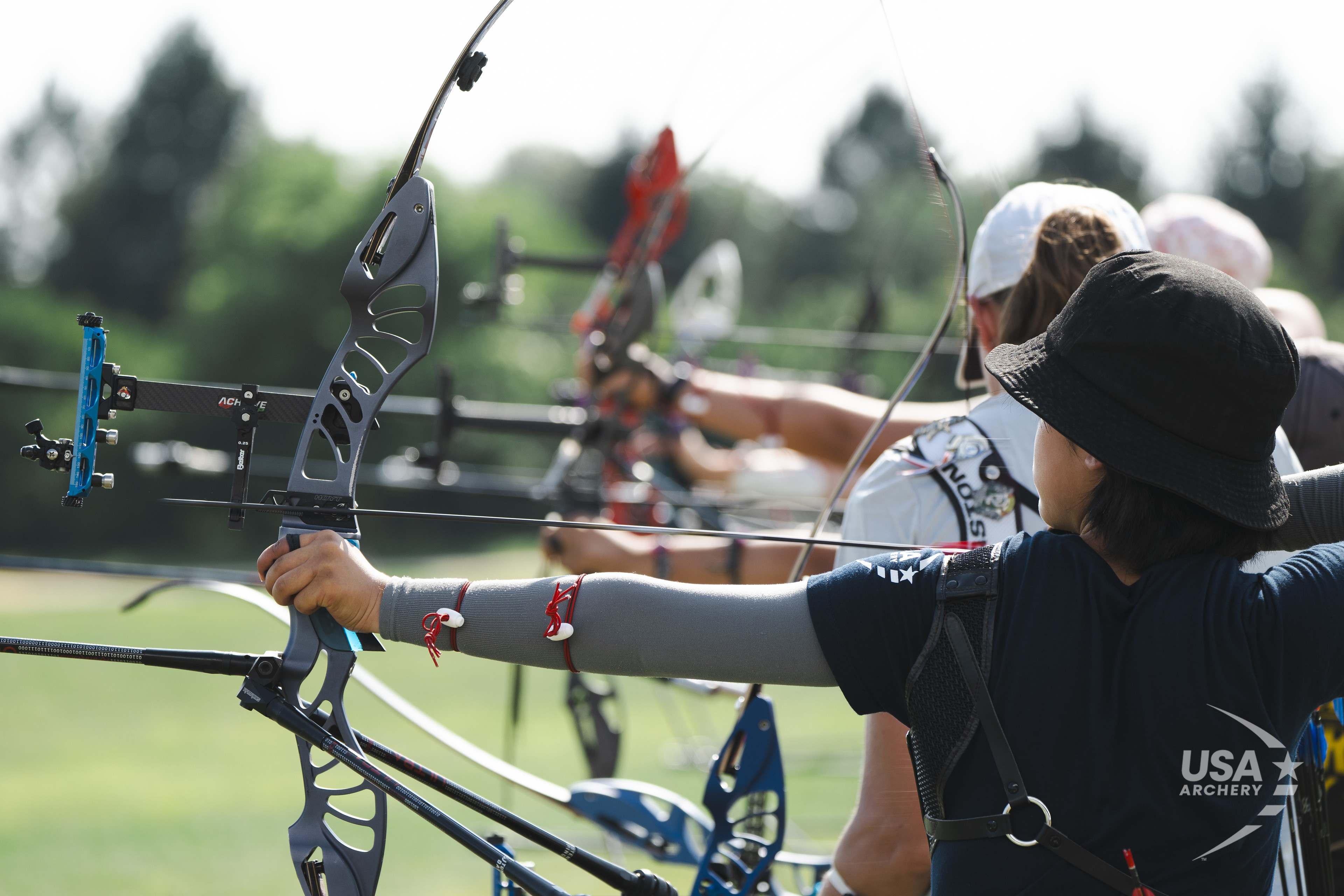
Article written by Jim White, Level 5-NTS Coach for a 2019 edition of the USA Archery High Performance Newsletter
The outdoor season is now over and now it’s time to take a breather and reflect on what worked well this year, what didn’t, and why. This applies to both the archer AND the coach. This is a team effort and both members must be on the same page when it comes to planning for next year.
Reflection on this year’s performance should guide your planning for next year’s activities. Start with what went well. Obviously, those are things you will want to continue to do and build on that.
The pieces that didn’t meet expectations are harder to face at times, but you need to be brutally honest with yourself if you expect to get better. Was it not enough practice? Not enough competition? Insufficient equipment? Poor physical condition? Financial woes? Form not good enough to score well? Mental management skills lacking?
Identifying the problem areas is a critical step and the coach should be able to help since he or she has watched you all season long and probably has a good idea of what needs attention.
If you are the coach, ask your archer to list what he or she thinks could contribute to areas for improvement. Ask the archer to write problem areas down on paper rather than just telling you what they think you want to hear. Have them to do this at home in a quiet room when they have had some time to really think about it. You should get a better picture of what they really think. You should also do the same. You might be surprised at the comparisons of the two documents.
Sometimes we look at the wrong thing when trying to improve performance. For example, I have seen coaches watch their archer “pluck the string” upon release and immediately focus on “fixing that release”. In truth, the release is not the problem. The problem is improper back tension.
When the arm has to hold the weight of the draw, the fingers on the string tend to tighten up and the longer the hold, the tighter they get. This means to let go of the string, the archer has to “take” the hand off the string instead of letting the string push the fingers out of the way. The result is a “pluck” and the oscillation of the string back to the brace height position is much more erratic producing less than consistent arrow flight. Fix the back tension problem and the “pluck” goes away. Learn to look at the CAUSE of the problem not just the PROBLEM.
Planning is about finding solutions for issues that need attention and setting goals that will solve them.
Here’s an example: Let’s say the archer is currently shooting about 295 at 60 or 70 meters. Depending on the age category, that’s probably a good score but not good enough to make a national podium. He or she has been hovering around that score all summer and can’t seem to break that 300 level and be more competitive. Why? Sometimes it is because mentally they do not expect to go higher. That 295 is where they are comfortable.
If they are shooting and are on a pace to shoot a 305 today, many times the brain says “Oops, it’s not like you to shoot a 305”. That thought will take them back down to maybe a 298, where it’s more “comfortable”. Likewise, if they are on a pace for a 285, the brain recognizes this is not like them either and will pick up the pace and they may score a 293.
So that range of between 293 and 298 is their “comfort zone” or “expectation level” that they have trained their brain to accept. This doesn’t require them to take any risks or push themselves to go higher.
So, what does the archer do to change this? They have to raise their expectation level mentally. One idea is to post sticky notes around the house with little positive reminders on them like “it’s like me to shoot above 305” or “I can shoot three 10s in a row”. Retrain the brain to expect better and they will see a difference. Don’t be afraid to push and take some risks!
These are the characteristics of effective goals. Be sure to use them!
Start your goal-setting session by going to the end of next year’s competitive season and writing down where you think you can realistically be by then. Write down your end goals and then prioritize them. Working backward, set goals as stepping stones that will ensure you will meet the end goals. Then, just work the plan.
If you fail to reach a goal by the date you set, don’t just cast that goal aside. Figure out why you didn’t reach it, and re-commit to it. If it was a good goal when you set it, keep working towards it. If you need to reevaluate, it’s okay to make adjustments as needed to stay on track to reaching your goals.
Good evaluation and planning are the tools that top archers use to be at the top. Using these tools is the key to keep getting better. Remember, setting goals is the easy part. Doing the work necessary to meet them is the hard part. Are you willing to do what others aren’t willing to do? That’s what sets champions apart from the others!